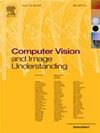HCTD:用于无人机航拍图像中精确目标检测的CNN-transformer混合
IF 3.5
3区 计算机科学
Q2 COMPUTER SCIENCE, ARTIFICIAL INTELLIGENCE
引用次数: 0
摘要
由于严重的目标尺度变化、小目标的密集分布、复杂的背景和任意方向,无人机图像中的目标检测面临着巨大的挑战。这些因素,再加上多尺度目标、遮挡、环境干扰等导致的类间高相似性和类内大变异,使得空中目标检测与常规场景有着本质的区别。现有的方法往往难以有效地捕获全局语义信息,并且往往忽略了一些关键问题,如下采样期间的特征丢失、信息冗余和跨层特征交互中的不一致。为了解决这些限制,本文提出了一种基于cnn - transformer的混合检测器,称为HCTD,专门设计用于无人机图像分析。该框架集成了三个新模块:(1)特征滤波模块(FFM)通过双全局池化(最大和平均)策略增强判别响应并抑制背景噪声;(2)一个卷积加性自关注特征交互(CASFI)模块,该模块用空间和通道交互的轻量级加性融合取代点积关注,在降低计算成本的情况下实现高效的全局上下文建模;(3)促进多尺度语义传播和对齐的全局上下文流特征金字塔网络(GC2FPN),以提高小目标检测的鲁棒性。在VisDrone2019数据集上的大量实验表明,HCTD-R18和HCTD-R50分别达到38.2%/43.7% AP50、23.1%/24.6% AP75和13.9%/14.7% APS。此外,TIDE工具包还用于分析六种错误类型的绝对和相对贡献,从而更深入地了解每个模块的有效性,并为未来的改进提供有价值的指导。代码可从https://github.com/Mundane-X/HCTD获得。本文章由计算机程序翻译,如有差异,请以英文原文为准。
HCTD: A CNN-transformer hybrid for precise object detection in UAV aerial imagery
Object detection in UAV imagery poses substantial challenges due to severe object scale variation, dense distributions of small objects, complex backgrounds, and arbitrary orientations. These factors, compounded by high inter-class similarity and large intra-class variation caused by multi-scale targets, occlusion, and environmental interference, make aerial object detection fundamentally different from conventional scenes. Existing methods often struggle to capture global semantic information effectively and tend to overlook critical issues such as feature loss during downsampling, information redundancy, and inconsistency in cross-level feature interactions. To address these limitations, this paper proposes a hybrid CNN-Transformer-based detector, termed HCTD, specifically designed for UAV image analysis. The proposed framework integrates three novel modules: (1) a Feature Filtering Module (FFM) that enhances discriminative responses and suppresses background noise through dual global pooling (max and average) strategies; (2) a Convolutional Additive Self-attention Feature Interaction (CASFI) module that replaces dot-product attention with a lightweight additive fusion of spatial and channel interactions, enabling efficient global context modeling at reduced computational cost; and (3) a Global Context Flow Feature Pyramid Network (GC2FPN) that facilitates multi-scale semantic propagation and alignment to improve small-object detection robustness. Extensive experiments on the VisDrone2019 dataset demonstrate that HCTD-R18 and HCTD-R50 achieve 38.2%/43.7% , 23.1%/24.6% , and 13.9%/14.7% respectively. Additionally, the TIDE toolkit is employed to analyze the absolute and relative contributions of six error types, providing deeper insight into the effectiveness of each module and offering valuable guidance for future improvements. The code is available at: https://github.com/Mundane-X/HCTD.
求助全文
通过发布文献求助,成功后即可免费获取论文全文。
去求助
来源期刊

Computer Vision and Image Understanding
工程技术-工程:电子与电气
CiteScore
7.80
自引率
4.40%
发文量
112
审稿时长
79 days
期刊介绍:
The central focus of this journal is the computer analysis of pictorial information. Computer Vision and Image Understanding publishes papers covering all aspects of image analysis from the low-level, iconic processes of early vision to the high-level, symbolic processes of recognition and interpretation. A wide range of topics in the image understanding area is covered, including papers offering insights that differ from predominant views.
Research Areas Include:
• Theory
• Early vision
• Data structures and representations
• Shape
• Range
• Motion
• Matching and recognition
• Architecture and languages
• Vision systems
 求助内容:
求助内容: 应助结果提醒方式:
应助结果提醒方式:


